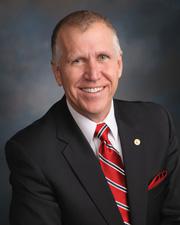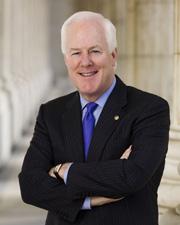0
0
0
Lowering Education Costs and Debt Act
3/13/2024, 1:23 AM
Summary of Bill S 1972
Bill 118 s 1972, also known as the Lowering Education Costs and Debt Act, aims to address the rising costs of higher education and the increasing burden of student loan debt in the United States. The bill proposes several measures to make college more affordable and reduce the financial strain on students and their families.
One key provision of the bill is the expansion of federal financial aid programs, such as Pell Grants, to provide more assistance to low-income students. This would help cover tuition, fees, and other expenses associated with attending college. Additionally, the bill includes provisions to increase funding for historically black colleges and universities (HBCUs) and other minority-serving institutions, ensuring that all students have access to quality higher education.
Another important aspect of the bill is the establishment of a loan forgiveness program for borrowers who work in public service professions, such as teachers, nurses, and social workers. This program would incentivize individuals to pursue careers that benefit society while also helping them manage their student loan debt. Furthermore, the bill includes measures to improve financial literacy education for students and families, helping them make informed decisions about paying for college and managing their finances. It also seeks to increase transparency around college costs and outcomes, making it easier for students to compare schools and make informed choices about where to attend. Overall, the Lowering Education Costs and Debt Act aims to make higher education more affordable and accessible for all Americans, while also addressing the growing problem of student loan debt. By expanding financial aid, supporting minority-serving institutions, offering loan forgiveness for public service workers, and improving financial literacy, this bill seeks to alleviate the financial burden on students and promote educational opportunity for all.
One key provision of the bill is the expansion of federal financial aid programs, such as Pell Grants, to provide more assistance to low-income students. This would help cover tuition, fees, and other expenses associated with attending college. Additionally, the bill includes provisions to increase funding for historically black colleges and universities (HBCUs) and other minority-serving institutions, ensuring that all students have access to quality higher education.
Another important aspect of the bill is the establishment of a loan forgiveness program for borrowers who work in public service professions, such as teachers, nurses, and social workers. This program would incentivize individuals to pursue careers that benefit society while also helping them manage their student loan debt. Furthermore, the bill includes measures to improve financial literacy education for students and families, helping them make informed decisions about paying for college and managing their finances. It also seeks to increase transparency around college costs and outcomes, making it easier for students to compare schools and make informed choices about where to attend. Overall, the Lowering Education Costs and Debt Act aims to make higher education more affordable and accessible for all Americans, while also addressing the growing problem of student loan debt. By expanding financial aid, supporting minority-serving institutions, offering loan forgiveness for public service workers, and improving financial literacy, this bill seeks to alleviate the financial burden on students and promote educational opportunity for all.
Read the Full Bill
Current Status of Bill S 1972
Bill S 1972 is currently in the status of Bill Introduced since June 14, 2023. Bill S 1972 was introduced during Congress 118 and was introduced to the Senate on June 14, 2023. Bill S 1972's most recent activity was Read twice and referred to the Committee on Health, Education, Labor, and Pensions. as of June 14, 2023
Bipartisan Support of Bill S 1972
Total Number of Sponsors
2Democrat Sponsors
0Republican Sponsors
2Unaffiliated Sponsors
0Total Number of Cosponsors
10Democrat Cosponsors
0Republican Cosponsors
10Unaffiliated Cosponsors
0Policy Area and Potential Impact of Bill S 1972
Primary Policy Focus
EducationAlternate Title(s) of Bill S 1972
Lowering Education Costs and Debt Act
Lowering Education Costs and Debt Act
A bill to increase college transparency and for other purposes.
Comments
Sponsors and Cosponsors of S 1972
Latest Bills
Providing for congressional disapproval under chapter 8 of title 5, United States Code, of the rule submitted by the Bureau of Land Management relating to "Central Yukon Record of Decision and Approved Resource Management Plan".
Bill HJRES 106December 12, 2025
Providing for congressional disapproval under chapter 8 of title 5, United States Code, of the rule submitted by the Bureau of Land Management relating to "North Dakota Field Office Record of Decision and Approved Resource Management Plan".
Bill HJRES 105December 12, 2025
Holocaust Expropriated Art Recovery Act of 2025
Bill S 1884December 12, 2025
Providing for congressional disapproval under chapter 8 of title 5, United States Code, of the rule submitted by the Bureau of Land Management relating to "Miles City Field Office Record of Decision and Approved Resource Management Plan Amendment".
Bill HJRES 104December 12, 2025
Enduring Justice for Victims of Trafficking Act
Bill S 2584December 12, 2025
National Defense Authorization Act for Fiscal Year 2026
Bill S 1071December 12, 2025
Technical Corrections to the Northwestern New Mexico Rural Water Projects Act, Taos Pueblo Indian Water Rights Settlement Act, and Aamodt Litigation Settlement Act
Bill S 640December 12, 2025
Department of Defense Appropriations Act, 2026
Bill HR 4016December 12, 2025
End the Fed’s Big Bank Bailout Act
Bill S 2113December 12, 2025
Federal Reserve Transparency Act of 2025
Bill S 2327December 12, 2025
Understanding the True Cost of College Act of 2023
Bill S 528March 12, 2024
Streamlining Accountability and Value in Education for Students Act
Bill S 1971December 7, 2023
Informed Student Borrowing Act of 2023
Bill S 1970March 12, 2024
Graduate Opportunity and Affordable Loans Act
Bill S 1968March 12, 2024
College Transparency Act
Bill S 1349December 15, 2023
Informed Student Borrowing Act of 2023
Bill HR 4616December 15, 2023
College Transparency Act
Bill HR 2957December 15, 2023
Understanding the True Cost of College Act of 2023
Bill HR 1198December 15, 2023





